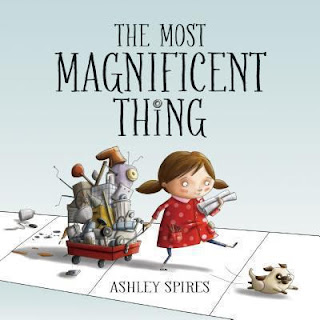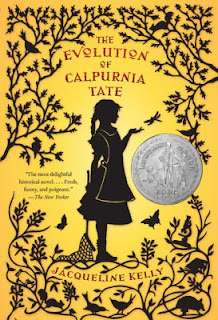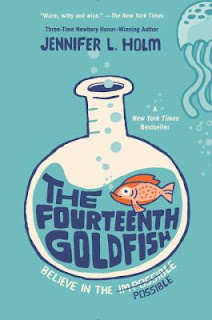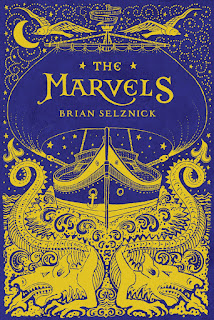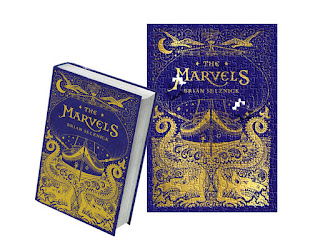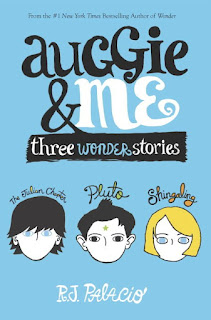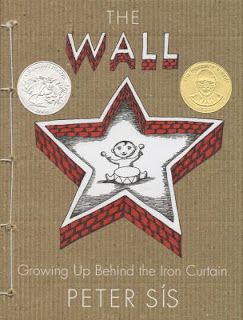new posts in all blogs
Viewing: Blog Posts Tagged with: ages 12-14, Most Recent at Top [Help]
Results 1 - 9 of 9
How to use this Page
You are viewing the most recent posts tagged with the words: ages 12-14 in the JacketFlap blog reader. What is a tag? Think of a tag as a keyword or category label. Tags can both help you find posts on JacketFlap.com as well as provide an easy way for you to "remember" and classify posts for later recall. Try adding a tag yourself by clicking "Add a tag" below a post's header. Scroll down through the list of Recent Posts in the left column and click on a post title that sounds interesting. You can view all posts from a specific blog by clicking the Blog name in the right column, or you can click a 'More Posts from this Blog' link in any individual post.
I can't wait to share The Girl Who Drank the Moon with my students and hear their thoughts; it's a story full of deep magic, wonderful characters, powerful themes and rich language. Magical stories have fascinated me since I was a young girl--starting with classic fairy tales, their all-powerful witches and the young people who outsmart them. This is sure to be a favorite this fall, especially with my fantasy-loving readers.
The Girl Who Drank the Moon
by Kelly Barnhill
Algonquin / Workman, 2016
Your local library
Amazon
ages 10-14
preview
*best new book*
A terrible crime happens once each year--the people of the Protectorate must sacrifice a baby, leaving it in the forest for the witch who threatens them. They believe that this child saves them all: "Sacrifice one or sacrifice all." But who is telling this story? Who makes the family sacrifice their child? And what happens when the child is left in the forest? Right away, questions start swirling in the readers' mind.
This complex story quickly unfolds, revealing that the Elders hold the power in the Protectorate, enforcing this tradition ruthlessly--and the submissive populace rarely questions them. This year, however, things go differently as the grieving mother protests vehemently when her baby is taken to be left in the forest. Barnhill quickly raises the questions of truth, power, authority and loyalty--themes that readers will reflect on throughout the story.
As soon as the Elders leave the baby in the forest, a kind witch named Xan rescues her. Xan accidentally feeds the infant moonlight, which gives her powerful magic. Aware that magic is both a power and a responsibility, Xan decides to raise the infant--whom she names Luna--as her granddaughter.
Barnhill skillfully weaves together three separate plot lines: Xan and Luna's relationship together as Luna grows into adolescence; the grief the madwoman--Luna's mother--endures after her baby is taken from her; and the questions that arise in a young apprentice to the Elders after he witnesses the madwoman's breakdown.
I cannot wait to hear what students in my Mock Newbery club say about this story. Will they react most to the characters? Or will they start thinking about the themes that Barnhill raises? How will they react to the uncertainty and complexity in the plot? It will be a terrific choice for book clubs to read and discuss.
I loved listening to Kelly Barnhill talk about the beginning of the story with my friend librarian Laura Given, in the summer reading podcast. Definitely listen to Kelly and then listen to Laura read aloud the opening chapter in her podcast
PCS Reads (hopefully the podcast will embed below).I love how Donalyn Miller and Stacey Riedmiller share their thoughts about this magical story in their
NerdyBookClub review:
"It is impossible for mere mortals to adequately communicate the beauty of Barnhill’s language or the emotional resonance of Luna’s story, so we won’t even try. All we can share is our pale impressions of it like memories of a moonlit night in the woods...
The Girl Who Drank the Moon reminds us that all great stories offer readers rich explorations of what it means to be human–even when the “people” are dragons and witches. Whether our scales and warts show on the outside or not, we are all flawed, but our choices show the world who we really are."
The Girl Who Drank the Moon is a book that I want to savor, reread and talk about. It is definitely a complex story that juggles many themes and plot lines, asking readers to consider different characters' points of view and motives.
The review copies were kindly sent by the publisher, Algonquin Books for Young Readers / Workman Publishing. If you make a purchase using the Amazon links on this site, a small portion goes to Great Kid Books. Thank you for your support.
©2016 Mary Ann Scheuer, Great Kid Books
I am ridiculously excited to share Booked with kids, friends and librarians. Kwame Alexander hits the sweet spot again, this time scoring a goal with his mix of soccer, family, first crushes, friendship and poetry.
Booked
by Kwame Alexander
Houghton Mifflin Harcourt, 2016
Your local library
Amazon
ages 10-14
*best new book*
Nick
loves soccer, whether it's playing
futsol with his best friend, dreaming of playing professionally, or staying up late playing FIFA online. What Nick
hates are books. More specifically, he hates that his dad makes him read his own dictionary of unusual words.
Kwame Alexander has crafted a novel that is fast to read, full of wordplay and humor, and leaves you thinking. I love the way he captures the bantering between Nick and his mom, as well as between Nick and his best friend Coby. Right from the beginning, he shows how kids play with words in smart, sophisticated ways. My students love telling jokes, and will love seeing if their friends get this. Just see if they see why this is such a funny way for Nick to introduce his dad, the linguistics professor:
"In the elementary school spelling bee
when you intentionally
misspelled heifer,
he almost had a cow."
As Nick struggles with his parents' impending divorce, bullying at school and figuring out how to talk to the girl of his dreams, he discovers that words and poetry can actually be cool. A great follow up to
The Crossover!
Want to read more? Check out this terrific NPR interview with Kwame from this weekend:
How To Get Kids Hooked On Books? 'Use Poetry. It Is A Surefire Way'
-- NPR radio interview, April 3, 2016
I'm so jazzed to share this that I've already placed an order for 15 books (!!) with my favorite local bookstore, Mrs. Dalloway's, and I will be sharing these with friends tomorrow. I hope to share soon how kids respond to
Booked. My sense is that
Booked will resonate more with middle school students than elementary students, but I do think many 5th graders will enjoy and relate to Nick's struggles.
The review copy was kindly sent by the publishers, Houghton Mifflin Harcourt. If you make a purchase using the Amazon links on this site, a small portion goes to Great Kid Books. Thank you for your support.
©2016 Mary Ann Scheuer, Great Kid Books
It's no secret that my students love graphic novels, but many parents and teachers are still reluctant to see these as stories worth reading. Yet I would argue that Roller Girl presents a compelling story with interesting, well-developed characters who struggle with friendship issues -- and does so better than many of the more traditional novels I've read this year.
Astrid and her best friend Nicole have been best friends since 1st grade, but things begin to change as they head toward middle school. When Astrid's mom takes them to see a roller derby match, Astrid thinks it's the coolest thing ever--the players looked really tough, with weird hair, crazy names and creepy makeup. When she sees a flyer announcing a summer camp, Astrid knows she just has to go -- she is totally determined to become a roller girl.
Life isn't so neat and simple. Even though they've always done everything together, Nicole decides to go to ballet camp instead of roller derby camp. Astrid doesn't let this sway her, and heads off to roller derby camp on her own. The summer is full of ups and downs, twists and turns as Astrid navigates friendship issues and learns how to play roller derby.
Jamieson creates characters who are likable but flawed in a way that rang true with me. Astrid is strong and determined, but she jumps to conclusions at times -- and ends up coming close to ruining friendships as a result. When she grows apart from Nicole, she assumes that mean-girl Rachel is going to take her place. I especially liked the way that Jamieson shows the complexities of friendship and avoids a sugar-sweet ending.
Learning how to play roller derby takes grit and determination. Astrid falls down time and time again. But she's inspired by her hero Rainbow Bite, who encourages her to practice and practice if she wants to get playing time. Throughout, Jamieson weaves themes of determination, honesty and friendship without overpowering the plot or making it feel didactic.
Today we discussed
Roller Girl and 8 other books in the
Heavy Medal Mock Newbery discussion. The
rules for the Newbery Award instruct committee members to focus on the words and not the pictures--and so for many years I had considered graphic novels difficult to consider in the same way as other books. But today I had the realization that I want to look at the whole book that the author has created.
The Newbery rules (see the
Newbery terms and criteria online) instruct committee members to consider the following
criteria:
theme, information, plot, characters, setting and style. And so I want to start encouraging my students to think about graphic novels in terms of these criteria as well. In my view,
Roller Girl is distinguished in the way it presents themes for children as they transition from childhood to adolescence. The roller derby setting is exciting, thoroughly developed and compelling. The characters are fully developed in nuanced, authentic ways. I want to focus on the overall story, as I read and talk about books with children, instead of just trying to focus on the words.
As I reflect on this story, I am reminded of the power of talking about books. We grow through our chance to share and reflect together. I entered today's discussion liking
Roller Girl, but unsure how to compare it to other books. Today's discussion helps me see why my students return again and again to books like
Raina Telgemeier's
Smile and
Kazu Kibuishi's
Amulet series. It isn't just their visual appeal, it's their overall literary appeal as stories that speak to children in powerful ways.
The review copy was kindly sent by the publisher, Dial / Penguin. If you make a purchase using the Amazon links on this site, a small portion goes to Great Kid Books. Thank you for your support.
©2016 Mary Ann Scheuer, Great Kid Books
Only two generations ago, our grandmothers faced serious limitations on the careers they could pursue. Today, our girls can do anything they put their minds to, but far fewer women pursue scientific careers than men. Here are two picture books and three novels that share the exciting spark that fuels so much passion in young scientists.
The Most Magnificent Thing
by Ashley Spires
Kids Can, 2014
Your local library
Amazon
ages 4-7
This picture book celebrates the trials and tribulations that come with making things. As the young artist & engineer pulls a wagon full of odds and ends, she starts designing her magnificent creation. But science is hard work, filled with disappointments, before a triumphant ending.
Rosie Revere, Engineer
by Andrea Beaty, illustrated by David Roberts
Abrams, 2013
Your local library
Amazon
ages 5-8
This rhyming picture book tells the story of shy Rosie who likes to build things hidden away in her attic room. Her great-great-aunt Rose comes to visit, helping young Rosie see her way through her current contraption’s failure: for now she can try again. Rosie the Riveter would be proud, indeed.
Chasing Secrets
by Gennifer Choldenko
Wendy Lamb / Random House, 2015
Your local library
Amazon
ages 9-12
Turn-of-the-century San Francisco comes to life for young readers as 13-year-old Lizzie Kennedy accompanies her father on medical house calls, forms a friendship with the son of Jing, her family’s beloved cook, and grapples with the injustices that exist with gender, class and race. Local author Choldenko creates a tender and gripping story of friendship, mystery and persistence.
The Evolution of Calpurnia Tate
by Jacqueline Kelly
Henry Holt, 2009
Your local library
Amazon
ages 9-14
A natural-born scientist, 11-year-old Calpurnia would like spend time examining insects, getting to know her scientist grandfather or reading Darwin’s controversial The Origin of Species. But in 1899 Texas, all around her expect young girls to learn to sew, run a household and attract a future husband. Readers adore this witty heroine, and will be thrilled to read the sequel just published this year.
The Fourteenth Goldfish
by Jennifer L. Holm
Random House, 2014
Your local library
Amazon
ages 9-12
When a vaguely familiar teenage boy shows up at Ellie’s house, she is confused until she realizes that her grandfather has discovered a way to regenerate himself. But now he needs Ellie’s help regaining access to his laboratory. Young readers love the relationship between Ellie and her grandfather, but they also feel her growing excitement for scientific discoveries.
This article was originally published in
Parents Press, September 2015. Many thanks for all of their support. On Wednesday, I'll share 5 nonfiction books that highlight the accomplishments of women scientists.
The review copies came from our school library, public library and home library. If you make a purchase using the Amazon links on this site, a small portion goes to Great Kid Books. Thank you for your support.
©2015 Mary Ann Scheuer, Great Kid Books
"Either you see it or you don't."
As you open the heavy novel
The Marvels and read this epigraph, you wonder--just what am I supposed to see? What pieces fit of the story together? What details in his multilayered drawings does Brian Selznick intend as hints for plot twists to come? What imagery from his rich descriptions stand out?
Please join me as I ruminate over the wonder of Brian Selznick's masterful story
The Marvels. And definitely add your name below for a chance to win a giveaway of this beautiful novel.
The Marvels
by Brian Selznick
Scholastic, 2015
Your local library
Amazon
ages 10-14
As in Wonderstruck, Selznick tells two entirely different stories, one in pictures and the other in text. Instead of intertwining the two narratives,
The Marvels begins with nearly 400 pages of continuous pictures, telling the story of Billy Marvel and his family of actors, who flourish in London from the 17th to 19th centuries. The text then jumps nearly a century later, to Joseph Jervis, a boy who runs away from home, seeking refuge with his uncle in London. Joseph's eccentric uncle lives in the Marvel house, and young Joseph is intrigued by its portraits and ghostly presences.
The book trailer for
The Marvels is wonderful -- giving you a taste for the story, Billy's shipwreck and the sense of drama created by the theater setting.
I'm sure our Emerson book club will be talking about this as we go through our Mock Newbery discussions. Honestly, I haven't been able to fully digest this story. What parts of a story do we pay attention to? Can we see more when we look again? How does the text develop the characters and setting?
The Marvels, like Selznick's other masterpieces, is definitely a story that demands multiple readings.
Brian Selznick is setting out on a
multi-city tour to celebrate the release of The Marvels! Find out where to meet Brian Selznick on his tour for
#THEMARVELS here.
Please complete the rafflecopter below to enter for a chance at winning your own copy of
The Marvels plus a Marvels jigsaw puzzle.
a Rafflecopter giveawayGiveaway open to US addresses only. Prizing and samples provided by Scholastic.Here are some snippets from other reviews:
- "Art is seen to illuminate life and life to constantly spark art — a point further reinforced in the afterword when Selznick reveals his inspiration. Rich with “miracles and sadness,” a bookmaking tour de force, this novel is as full of marvels as its title suggests." -- The Washington Post review
- "Upon completing The Marvels, I sat still, feeling as I did after a remarkable theatrical experience, say a dramatic opera, a visually stunning film, or a striking play, in awe of what I’d just experienced. Hours later it lingers with me, a gorgeous work of art." -- Monica Edinger, Educating Alice
- "As a mentor text, this book is an excellent anchor piece for looking at character development and characterization. We see especially how Joseph develops as a character and how he changes throughout the book. It's simple and subtle but remarkable at the same time." -- Jen Vincent, Teach Mentor Texts
The review copy was kindly sent by the publisher, Scholastic. If you make a purchase using the Amazon links on this site, a small portion goes to Great Kid Books. Thank you for your support.
©2015 Mary Ann Scheuer, Great Kid Books
"Imagine waking up one morning to find foreign soldiers standing on the street corners of your town. Overnight, an enemy army has arrived and now occupies your entire country. This is what happened on April 9, 1940, when Germany invaded Denmark in World War II."
Deborah Hopkinson begins the prologue to
Courage and Defiance by asking readers to imagine just how world-changing the events of April 1940 were. As she relates stories of Danish people who were spies, saboteurs and ultimately survivors, she paints a picture of just how complicated and dangerous life was for people who dared to make a stand against the German army.
Courage and Defiance
Stories of Spies, Saboteurs and Survivors in World War II Denmark
by Deborah Hopkinson
Scholastic, 2015
Your local library
Amazon
ages 11 to 14
Deborah Hopkinson weaves together the complicated tale of how many different individuals took actions large and small to resist, disrupt and fight back against the German army occupying Denmark. As she acknowledges in her introduction, this is a multifaceted, complex story. One of my overriding impressions is just how frightening it would be to live in these times, precisely because you could never be sure who was an informer or in the resistance movement. Students who are fascinated by history and can grapple with its complexities will find this an engrossing account.
 |
| Deborah Hopkinson |
I asked Deborah Hopkinson to share about her research process, and I'm honored to share her thoughts with you here. Thank you, Deborah.
"When students ask me my favorite part of writing about history, I tell them I’m a research nut. After all, the best way to really learn about something is to write about it. That was definitely the case with my new nonfiction title,
Courage & Defiance: Stories of Spies, Saboteurs, and Survivors in WWII Denmark, the first of three books I’m writing about the Second World War. And my favorite part of research is finding the stories of ordinary people.
Like the fictional characters in Lois Lowry’s classic Newbery-winning
Number the Stars, also set during the German occupation of Denmark, the real resistance activists I encountered in my research for this book were driven by strong personal convictions. I learned that many were young college students, whose first steps were often working in small groups on an underground newspaper.
Others, like Niels Skov, defied the instructions of his own government to launch what he called his “private war against the Germans” very much on his own, setting out on a bicycle at night to find German vehicles to set on fire. Later he was arrested for his resistance work and deported to labor camps in Germany. Niels survived the war and came to the U.S., becoming a university professor. When I asked him his advice for young people today he said, “Swim against the stream.”
 |
| Niels Skov |
Time travel, fantasy, and dystopian books are popular genres with young people. But learning about history can be just as exciting. Stanford historian Sam Wineburg once said studying history helps us think our way into what living in the past was like. “It's the only form of time travel that exists."
Young men and women in Denmark put their lives on the line to print and deliver underground newspapers, disrupt the German war machine by committing acts of sabotage, and prevent the deportation of their Jewish neighbors. Young readers in America today may be spared such life-and-death choices. But they nevertheless face difficult personal decisions every day.
The heroes and heroines of fantasy can certainly be models for young readers to emulate. But, I hope, so can real people. And history is full of them."
Thank you so much, Deborah, for sharing your personal thoughts on this powerful story. Friends, please do check out other stops on the
Courage & Defiance Blog Tour.The review copy was kindly sent by the publisher, Scholastic. If you make a purchase using the Amazon links on this site, a small portion goes to Great Kid Books. Thank you for your support.
©2015 Mary Ann Scheuer, Great Kid Books
What do other kids think of me?
Am I the only one going through this?
I'm sure that no one can understand how I'm feeling.
While any of us might have these thoughts once in a while, they are particularly intense for tweens -- kids ages 9 to 13 who are no longer little kids, but not quite teenagers. I've noticed that kids this age often turn to realistic fiction, perhaps reading to see how others cope with all the changing friendship dynamics that are happening around them.
Fans of
Wonder, by R.J. Palacio, are often touched precisely because they can see inside these social dynamics and get to know a kid who must struggle with these questions. I was eager to read Palacio's companion novel,
Auggie and Me, knowing how well she had helped us see inside different characters before. I'm definitely looking forward to sharing these stories with students--they will lead to some thoughtful conversations about empathy, kindness and understanding one another.
Auggie & Me: Three Wonder Stories
by R.J. Palacio
Knopf / Random House, 2015
audiobook by Brilliance Audio, 2015
Your local library
Amazon
ages 9-13
In
Auggie & Me, Palacio delves into three secondary characters from Wonder: Julian, Christopher and Charlotte. This is definitely NOT a sequel--the action takes place before and during the same time as Wonder. It does not tell the story of what happens to Auggie after
Wonder finishes. But it is a companion novel (or rather three short books) best read after
Wonder, "an expansion of Auggie's world," as Palacio writes in her introduction.
The three characters at the center of these short books were all impacted by Auggie, but these are their stories. We get to understand Julian, how his nightmares affected the way he reacted to Auggie, how his mother kept making excuses for him as opposed to helping him take responsibility for his actions. Palacio doesn't justify or defend Julian's actions, but she helps readers see inside him. And she lets Julian, who was so awful to Auggie in
Wonder, go through his own transformation.
Charlotte's story, in
Shingaling, shone the most brightly for me, perhaps because her insecurities resonated with me, or perhaps because her friendship struggles were separate from Auggie's and so more fully developed as a standalone story. But most likely, it's because of the way that Charlotte learns to overcome her worries, her social anxieties and her own inner-judgments to become friends with two girls she didn't know at all before 5th grade started.
Families and teachers will enjoy reading
Auggie and Me aloud precisely for the way it leads to conversations, just like
Wonder did. There are times that reading Julian's voice may be difficult, with his casual cruelty and naive declaration that he didn't mean to hurt anyone. And Charlotte sounds a lot like an insecure kid at times. But these voice rang true to me, and they let readers see inside other kids.
In the end,
Auggie and Me helps create empathy, leads to conversations about kindness and trust, makes way for small steps toward accepting others for who they are.
The review copy was kindly sent by the publisher, Alfred A. Knopf/Random House. If you make a purchase using the Amazon links on this site, a small portion goes to Great Kid Books. Thank you for your support.
©2015 Mary Ann Scheuer, Great Kid Books
How do you help children understand family stories in the context of history? Our lives are impacted by the social and political climates in which we live--and these impact the stories we tell our children about our own family's lives. Peter Sís wrestles with these questions in his memoir The Wall: Growing Up Behind the Iron Curtain, telling the story of growing up in Communist Czechoslovakia during the Cold War.
The Wall: Growing Up Behind the Iron Curtain
by Peter Sís
Frances Foster/Farrar, Straus & Giroux, 2007
Sibert Award for Nonfiction, 2008
Caldecott Honor, 2008
Your local library
Amazon
ages 9-16
Sís begins with a short introduction, giving context to the historical events. And then he starts his memoir by saying how he loved to draw for as long as he can remember. Throughout, he tells parallel stories of childhood and the political circumstances in Czechoslovakia. At home, he was able to draw whatever he wanted, but as soon as he started school, he was influenced by the state controlled propaganda.
"The Communists take control of the school. Russian-language classes--COMPULSORY.
Joining the Young Pioneers, the Communist youth movement--COMPULSORY."
 |
| "After drawing whatever he wanted to at home, he drew what he was told to at school." |
Sís conveys the historical context while giving his personal experience at the same time. The short chunks of text with small panel illustrations helps make the information more accessible and immediate. I find that kids like reading this more than one time, as they notice different details each time.
After the liberation of Prague Spring in 1968, the Soviets imposed strict controls once again. But Czechs found ways to push back and share ideas.
 |
| "Phones are bugged again, mail opened, people watched... Banned books are secretly translated, copied, and circulated as samizdat." |
Sís struggled to keep his artistic identity and independence. He describes both in his journal entries how he was pressured to join the party. And yet, as he wrote, "he had to draw. Sharing the dreams gave him hope." The journal entries (a sample is below) help give even more immediacy and details to how the political climate impacted his life.
 |
| "To get a permit to have a studio in my own house, I have to prove that I am an artist in good 'social standing,' that is, a member of the Community Party." |
My family and I recently visited the Czech Republic, meeting with several members of the university who have developed a program to honor my great-uncle,
George Placzek (a long article about his scientific legacy is in the
Cern Courier, the International Journal of High Energy Physics). I was fascinated to hear about how the Communist era impacted their lives, much as it had for Peter Sís. They faced limitations on their professional careers, and even brought a
samizdat to show me.
The Wall: Growing Up Behind the Iron Curtain provides a fascinating way to combine visual storytelling, memoir and political history. I am grateful to Peter Sís, not only for persevering to follow his art, but also for telling this story. I know, from my own family history, the pressure to move forward and put difficult times behind you--and the Czech Republic is blossoming once again. But this history, both personal and political, is important to share with our children.
Kirkus Review sums it up:
"A masterpiece for readers young and old."
Illustrations ©2007 Peter Sís; used with permission from the publisher, Farrar, Straus & Giroux / Macmillan. The review copy comes from our personal library. If you make a purchase using the Amazon links on this site, a small portion goes to Great Kid Books. Thank you for your support.
©2015 Mary Ann Scheuer, Great Kid Books
I have often wondered how to share the enormity of World War II with my children and students -- how to help them start to understand the enormity of the war, its complexities, and also its impact on individual people. My own family fled from German occupation of Czechoslovakia and Austria, and many who didn't leave were caught and killed.
 I feel strongly that children should learn about the upheaval that World War II caused, but how do we do this in a way that they can absorb? As parents and teachers we need to consider children's developmental stages as we introduce the terrifying and tragic aspects of war.
I feel strongly that children should learn about the upheaval that World War II caused, but how do we do this in a way that they can absorb? As parents and teachers we need to consider children's developmental stages as we introduce the terrifying and tragic aspects of war.
In The Journey that Saved Curious George, Louise Borden shares the true story of how Margret and H.A. Rey escaped Paris two days before the Nazis invaded. It is one of the best introductions I have ever read with children to this tumultuous time period in European history.
The Journey that Saved Curious George
The True Wartime Escape of Margret and H.A. Rey
by Louise Borden
illustrated by Allan Drummond
Houghton Mifflin Harcourt, 2005
Google Books preview
Your local library
Amazon
ages 9-14
Borden writes in her introduction that she had heard for many years about Margret and H.A. Rey's escape from Paris on bicycles in June 1940, just as the Germans were occupying France, but that no one could share many details.
"The story felt incomplete. I wanted to know more. I wanted real images. I was curious, just like the Reys' famous little monkey, George."
And so Borden embarked on her own journey, a journey of research reading the Reys' papers, notebooks and diaries, speaking to the Reys' friends and colleagues, and traveling to many of the places where the Reys lived between 1936 and 1940.
 |
| map showing the Reys' journey in 1940, escaping Paris by bicycle and train |
Margret and H.A. Rey were both born in Hamburg, Germany in 1906 and 1898, respectively, to middle class Jewish families. Borden helps young readers understand the context of their lives, by combining clear text, photographs and illustrations. Readers immediately get a sense of Margret and Hans as young people, but also the times and places they lived.
The Reys returned to Europe for their honeymoon in 1936 and ended up living in Paris for four years. During this time, they began writing and publishing children's picture books. As the Nazis began invading European countries, the Reys became concerned. When the Germans invaded Holland, Belgium and then northern France, it became clear that the Reys needed to make plans to flee--and quickly.
I especially love how Borden shows actual visas, passports and pages from Hans' diary to help readers see how she found the information to piece together for their story. This helps create a palpable sense of being there alongside the Reys, especially as they frantically tried to prepare for their departure.
Alan Drummond's illustrations also convey the chaos, but the line drawings give more life and energy and the soft colors keep the mood from becoming too somber. The illustration below show how Margret and Hans eventually were able to flee Paris on bicycles--two days before Paris fell to the German invasion.
Through this story, children are able to get an appreciation for both the chaos that war brought to ordinary people throughout Europe, as well as the frightening experience of one couple. As Louise Borden writes,
"Everywhere there was confusion and noise: grinding gears of overheated cars and the frightening drone of German scout planes. Constant and relentless were the honking to speed up the crawling procession of the largest motorized evacuation in history.
More than five million people were on the roads of France that day. Among this sea of humanity were two small figures: Margret and H.A. Rey."
This is an excellent nonfiction for elementary students--especially those who profess disdain for nonfiction. The text is broken up into short lines, creating plenty of white space for the illustrations to tell their part of the story. The descriptions bring you right into the action, and the pacing keeps readers moving until the dramatic climax of the Reys' escape.
For more interesting information, definitely check out this
Q&A with Louise Borden, from the publishers Houghton Mifflin Harcourt.
I purchased these review copies for my personal library. If you make a purchase using the Amazon links on this site, a small portion goes to Great Kid Books. Thank you for your support.
©2015 Mary Ann Scheuer, Great Kid Books








